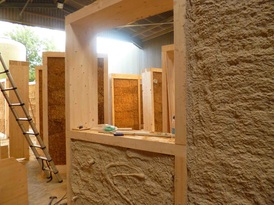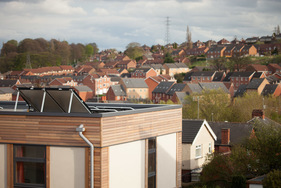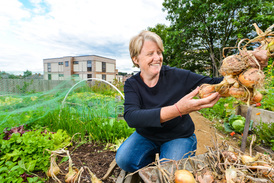Straw Bale
 We built the houses with ModCell, a company which has developed a low-carbon modern method of construction using panel timber walls insulated with strawbale. This significantly reduced the CO2 emitted during construction. In total, the LILAC development captured and stores over 1,080 tonnes of atmospheric equivalent CO2 through photosynthesis during the growth of the timber and straw. members were involved in the build process after the structural timber was assembled and were able to assist in adding the strawbales.
We built the houses with ModCell, a company which has developed a low-carbon modern method of construction using panel timber walls insulated with strawbale. This significantly reduced the CO2 emitted during construction. In total, the LILAC development captured and stores over 1,080 tonnes of atmospheric equivalent CO2 through photosynthesis during the growth of the timber and straw. members were involved in the build process after the structural timber was assembled and were able to assist in adding the strawbales.

Passive Solar / MVHR
The insulating materials and design of the buildings combine to store solar heat in the winter and reject solar heat in the summer, thus reducing the need to input heating energy. Each property has a “Mechanical Ventilation Heat Recovery System” (MVHR), which enables the indoor air quality to remain high without having to open the windows.

Solar Energy
Each home has a 1.25kw solar PV array, with an extra 4kw on the common house. The houses also have solar thermal for space and hot water heating.
Sharing
 We consider the environmental impact of our daily activities, for instance through car sharing; pooling equipment and tools; sharing meals twice a week; and looking to the local area to provide as many needs as possible. Growing food on our allotments means we eat as locally as physically possible!
We consider the environmental impact of our daily activities, for instance through car sharing; pooling equipment and tools; sharing meals twice a week; and looking to the local area to provide as many needs as possible. Growing food on our allotments means we eat as locally as physically possible!
